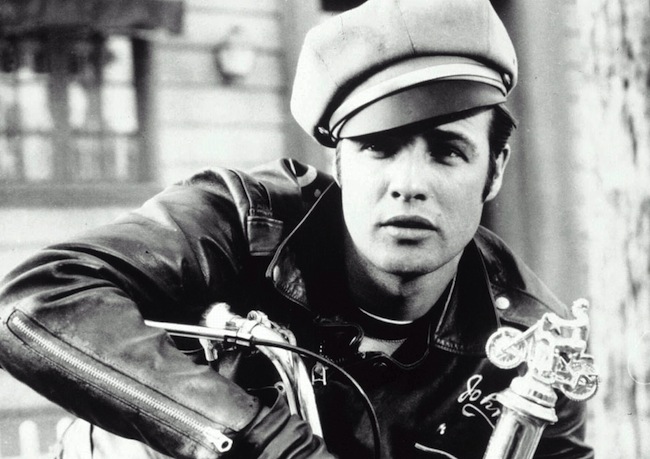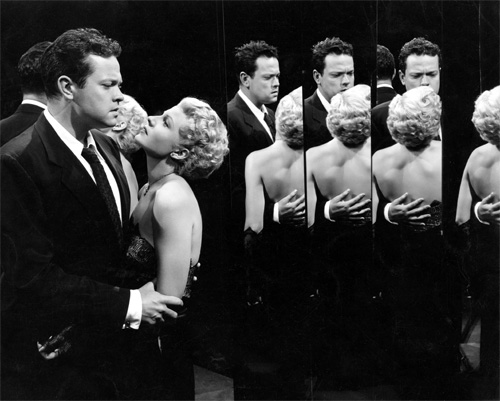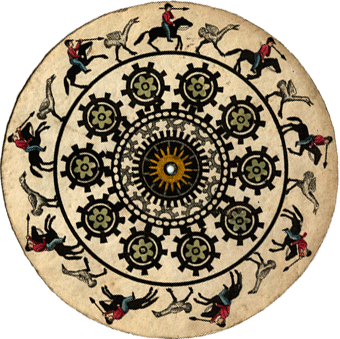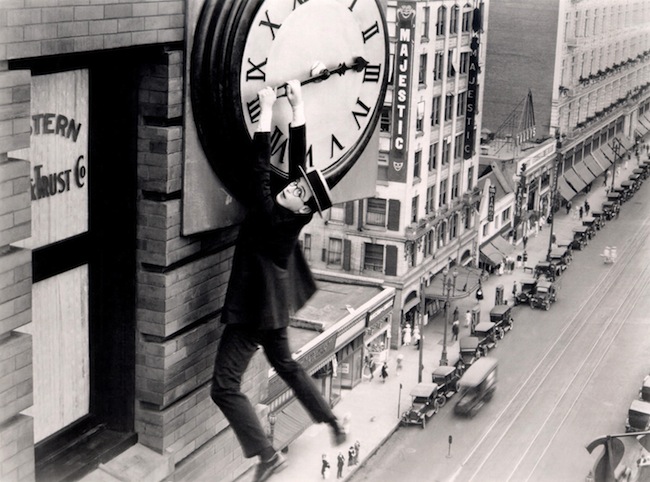World War II left the European film industry in ruins, as only Italy’s production facilities avoided devastation. The war also affected American filmmakers and audiences, leading to the production of dark, morally ambiguous and socially critical films in the film noirstyle. As a result of the House Un-American Activities Committee(HUAC) hearings, many of Hollywood’s most talented actors, directors, and screenwriters were blacklisted by the studios because of suspected ties to the Communist Party. Some moved to Europe, some continued to work by using colleagues’ names as fronts, and others saw their careers and lives ruined.
In response to competition from the new medium of television,Hollywood made films that showcased cinema’s distinctive qualities: stereophonic sound, large screen size, and color images, benefiting from the emergence of widescreen technology and better color film stock. By the mid-1950s, the blacklist and new technologies led Hollywood to concentrate on apolitical, spectacular films such as biblical epics, westerns, and musicals. A 1948 Supreme Court decision forced Hollywood studios to end their vertical integration policies, making the marketplace more competitive and increasing opportunities for independent and foreign producers.
Major Movements
Italian neorealism: After World War II, Italian filmmakers had to work under adverse conditions, facing a scarcity of film stock, studio space, lighting and editing equipment, and professional actors. The most talented of these directors turned these disadvantages into an aesthetic that came to be termed neorealism—a style characterized by on-location shooting; non-professional actors; natural lighting; grainy, documentary-like imagery; long takes; and stories about ordinary people. In the wake of the war’s devastation, neorealist films articulated the social, political, and economic problems facing Italy’s most disadvantaged and neglected citizens. Key films include Roberto Rosselini’s Rome, Open City (1945) and Paisà (1946), Luchino Visconti’s La Terra Trema (1948), and Vittorio De Sica’s Bicycle Thieves (1948).
Japanese art cinema: Influenced by both Western film aesthetics and Eastern artistic and philosophical traditions such as Zen Buddhism and Noh theater, several Japanese directors became the first non-Western filmmakers to gain international prominence. Noted for their technical brilliance, they ably chronicled the postwar transformations shaping Japanese society. Akira Kurosawa used sophisticated tracking shots, widescreen composition, and fast-paced editing to create epic allegorical recreations of Japanese history in the samurai era. Yasujiro Ozu employed long takes and a low-angled, motionless camera to make acute observations about generational tensions in post-war Japanese families. Kenji Mizoguchi combined Ozu’s use of the long take with Kurosawa’s fluid camera movement to shed a critical light on Japan’s feudal history and the circumscribed role of women within it. Key films include Kurosawa’s Rashomon (1950) andSeven Samurai (1954), Ozu’s Tokyo Story (1953), and Mizoguchi’sUgetsu (1953).
Major Directors
Welles, Orson: Unlike many of his contemporaries, Welles gained international prominence on the basis of only one film, Citizen Kane(1941). The film is full of technical innovations, including crane shots, overlapping dialogue, multiple audio tracks, purposely grainy film stock, and low-angle photography. It explores themes that Welles would revisit throughout his career: the corruption of power and wealth, the fine line between desire and obsession, the precariousness of knowledge, and the limits of ego and ambition. Welles’s use of deep focus, long takes, and chiaroscuro lighting, which located meaning in mise-en-scène rather than editing, influenced a generation of filmmakers working in the postwar film noir and realist styles. Though rejected by audiences and undermined by studio executives throughout his career, Welles still managed to make several more highly acclaimed films, including The Lady from Shanghai (1948) and Touch of Evil (1958).
Hitchcock, Alfred: In a career spanning half a century, Hitchcock won success in both his native Britain and Hollywood and directed some of the most memorable films of all time, including The 39 Steps (1935),Vertigo (1958), and North by Northwest (1959). Influenced by German expressionism (he was an assistant to F. W. Murnau at Ufa) and Soviet montage, Hitchcock used detailed visual and aural compositions to express his protagonists’ feelings of paranoia and claustrophobia, along with sophisticated editing to create suspense. With a fine-tuned sense of irony, Hitchcock examined the abnormal perversions and obsessive desires lurking beneath the surface of ordinary lives and societies, enabling him to become an astute observer of America in the 1950s, the decade during which he directed his greatest films.
Sirk, Douglas: Another transplant from the Ufa studios, German director Douglas Sirk came to prominence in the 1950s with a series of lush melodramas such as All That Heaven Allows (1955) andImitation of Life (1959). His films were rediscovered in the 1970s and acknowledged for their semiotic complexity, which enables them to function as both sentimental, visually resplendent genre pictures and radical critiques of the artificiality and hypocrisy of middle-class suburban culture.
Ray, Nicholas: Along with Sirk, Ray was the most incisive observer and critic of 1950s American culture, creating taut psychological dramas like In a Lonely Place (1950) and Rebel Without a Cause (1955). Embracing the new widescreen technology, Ray imbued his mise-en-scène with symbolism that points to the hollowness and restrictiveness of middle-class suburban domesticity. Talented actors such as Humphrey Bogart and James Dean ably expressed the psychological torment and moral ambiguities of Ray’s protagonists, whose rebellion against social structures and mores never quite manages to coalesce into active politics.
Kazan, Elia: One of the most successful directors of the postwar period, Kazan is known best for his collaboration with Marlon Brando, the method actor considered the greatest of his generation. However, Kazan’s legacy was forever compromised by his decision in 1952 to cooperate with HUAC and reveal the names of colleagues who were suspected communist sympathizers. Many of Kazan’s films are attempts to justify his actions at HUAC: Viva Zapata! (1952) portrays revolutionary leadership as inherently corrupt and doomed to failure, Man on a Tightrope (1953) feeds anti-communist paranoia, and On the Waterfront (1954) attempts to justify the act of informing.
Bresson, Robert: The French director Bresson emerged as a singular talent with an idiosyncratic style and strong moral vision upon the release of films such as Pickpocket (1959), Au Hasard Balthasar(1966), and Lancelot du Lac (1976). A devout Catholic, Bresson made films that represent the fragility of innocence, purity, and selflessness in a world corrupted by greed and cruelty. With an austere,minimalist visual style, Bresson expresses the moral dilemmas of his protagonists through complex sound design, novelistic narration, and restrained dialogue and acting.
Bergman, Ingmar: Throughout a prolific career in film and theater, Bergman, the son of a pastor, was interested in the impact of an alienating, modern world on human psychology and faith. In Persona(1966), Bergman uses an experimental, self-reflexive style to explore the ways in which film and other media contribute to our difficulties in recognizing material reality from illusion, self from other, eros from death. Bergman’s somber and portentous films express the agony of human existence through stillness and silence, often punctuated by moments of intense passion or despair visualized through searing, unforgettable images, such as the clock without hands in Wild Strawberries (1957) or the scene of self-mutilation inCries and Whispers (1972).
Ray, Satyajit: Educated amid the vibrant Bengali intellectual community and influenced by Italian neorealism and the films of Jean Renoir, the Indian director Ray burst onto the international scene with the Apu trilogy (1955–1958), which chronicles a Bengali boy’s growth into adulthood. Abandoning the mythological tales and song-and-dance productions of Indian commercial cinema, Ray focused on the subtle power dynamics and intimacies of domestic life. Accused by some of failing to address India’s pressing social and political problems, Ray instead used location shooting, naturalistic acting, and long takes to convey sensitively and carefully his characters’ reactions to the events shaping their lives.
Other major directors: Robert Aldrich, Jean Cocteau, Samuel Fuller, Vincente Minnelli, Michael Powell, Otto Preminger, Jacques Tati.












